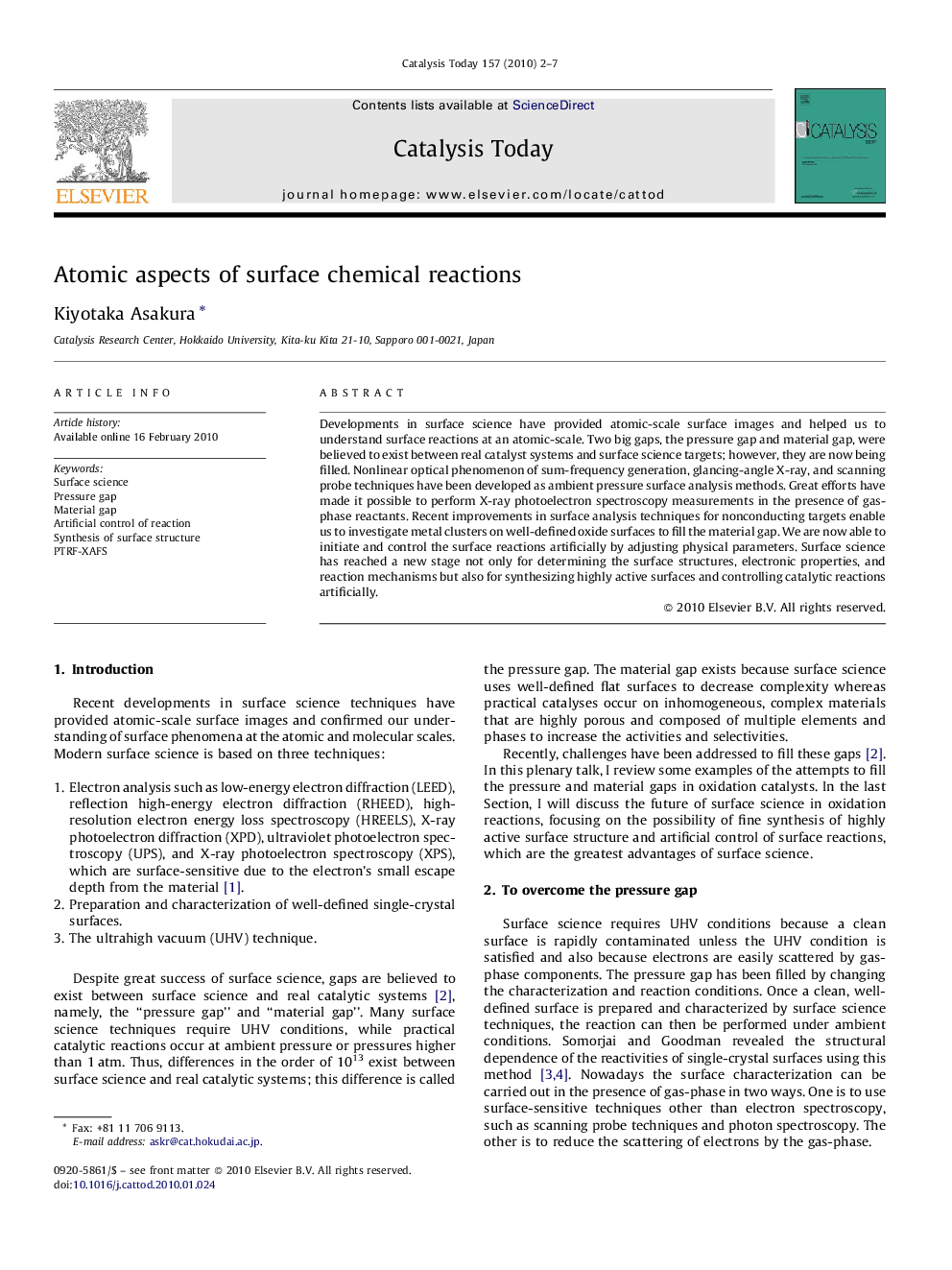| Article ID | Journal | Published Year | Pages | File Type |
|---|---|---|---|---|
| 56187 | Catalysis Today | 2010 | 6 Pages |
Developments in surface science have provided atomic-scale surface images and helped us to understand surface reactions at an atomic-scale. Two big gaps, the pressure gap and material gap, were believed to exist between real catalyst systems and surface science targets; however, they are now being filled. Nonlinear optical phenomenon of sum-frequency generation, glancing-angle X-ray, and scanning probe techniques have been developed as ambient pressure surface analysis methods. Great efforts have made it possible to perform X-ray photoelectron spectroscopy measurements in the presence of gas-phase reactants. Recent improvements in surface analysis techniques for nonconducting targets enable us to investigate metal clusters on well-defined oxide surfaces to fill the material gap. We are now able to initiate and control the surface reactions artificially by adjusting physical parameters. Surface science has reached a new stage not only for determining the surface structures, electronic properties, and reaction mechanisms but also for synthesizing highly active surfaces and controlling catalytic reactions artificially.
